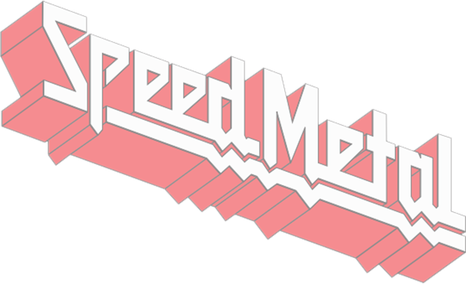
A gradual and systematic initiation into various metal styles – by circumstance more than intention – has ensured that I have never lost affection for older, simpler stylings. That affection doesn’t quite extend to newer bands attempting those old forms; despite sincerest motives, new retro bands by their very mission statement can’t help being self-conscious to a fault of the bracket of time and sound which they try slinging themselves into. But time moves forward in linear increments and its nature mandates a subject grounded in the “there and then”, acting in response to what he sees around himself in that “there and then”. Thus the inherent caveat which all retro metal bands carry: time-travel of the sort they attempt may be possible in science fiction but in reality, in a world unmeasurably different from the original, can only lead to appetites less than whetted and more often than not prematurely dulled.
There has been some debate among the metal community over what constitutes speed metal and thrash metal. According to the Dark Legions Archives, thrash was originally used to denominate hardcore-infused metal (see DRI and Corrosion of Conformity), while speed was reserved primarily for NWOBHM-driven bands like Metallica and Overkill. The bands that played pivotal roles in the formative scenes themselves don’t strictly abide by this classification; for what it’s worth, I have always viewed the sub-genre through a slightly different lens; to me, bands with a significant heavy metal component expressed through greater melodicity and thematic ambition have always “felt” like speed metal (Megadeth, Blind Guardian, Holy Terror, Angel Dust, Scanner, Artillery, Destruction, etc). On the other hand, bands with pronounced chug n’ groove, breakdowns, and just more unmitigated violence have appeared closely-related to the spillover from punk and hardcore, and therefore more deserving of the “thrash” sobriquet (Dark Angel, Vio-lence, Demolition Hammer, Morbid Saint, Exodus, etc). This might only be so much grasping at straws but words after all are powerful signifiers for the events they represent, and this nomenclature provides a serviceable contrast between the understated elegance and the overt brutality of the two cousin strains.
The criticism traditionally leveled at speed metal (and thrash metal, if you will) has been that by comprising large swathes of the song with loose-floating, rudderless riffsets, this style of metal gives short shrift to the real stuff of thematic movement and progression. This is so, too; speed metal in the hands of lesser bands exists for the sole purpose of travelling from point A to point B, and everything in between is frequently so much gratuitous release. Since ‘Paranoid‘, there has been something of the darkly seductive about the lone guitarslinger’s right wrist caught in a metronomically convulsive flutter, but far too many bands forget that the blurringly fast strum by itself, be it downpicked or alternately picked, is only a static part of the song’s riffset. Good speed metal bands have always found a way of integrating this picking style with the narrative-melodic superstructure of the song by remaining overwhelmingly heavy metal in sound and spirit. The approach may not stand up to the kind of deconstructionist scrutiny which structurally cohesive death metal does, but neither does it sacrifice emotion and feeling for the sake of excess.
The brutal end of the speed/thrash spectrum is a dead end today for many of the same reasons that have rendered brutal death metal obsolete. But traditional heavy metal continues to enjoy a meaningful revival across the globe because, as touched on so many times on this blog, a good song, warts and all, never really goes out of fashion. If speed metal bands are to remain relevant, they need to temper their approach by returning to base camp as it were and by subordinating the riff to the song.
Advertisements Share this:
- More





